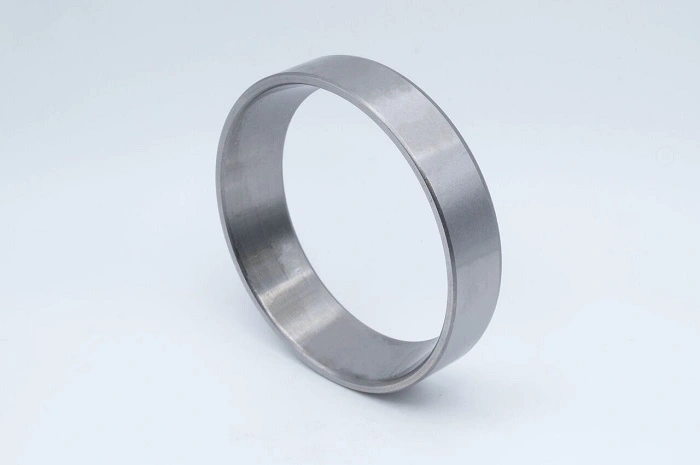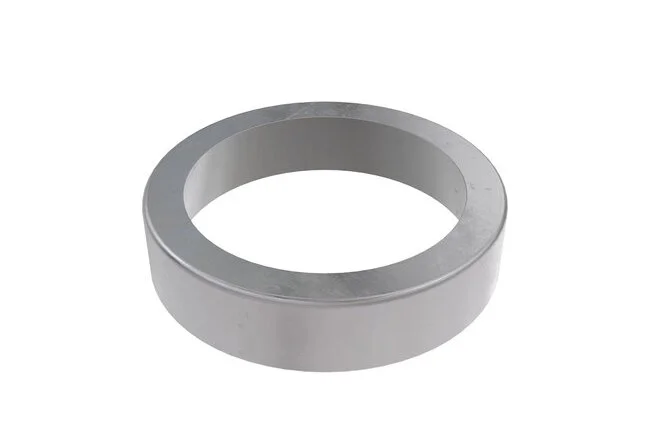Can Cup Tapered Roller Bearings Handle Heavy Loads?
Cup tapered roller bearings are critical components in numerous industrial applications where reliability under extreme conditions is essential. These specialized bearings feature tapered rollers positioned between an inner ring (cone) and an outer ring (cup), specifically engineered to withstand substantial radial and axial loads simultaneously. This configuration allows them to excel where traditional bearing designs might fail, making them indispensable in heavy machinery, automotive systems, and industrial equipment. The cup and cone arrangement provides exceptional load distribution and ensures precise alignment even under fluctuating operational demands.
How Do Cup Tapered Roller Bearings Compare to Other Bearing Types for Heavy-Duty Applications?
What Makes Cup Tapered Roller Bearings Structurally Superior?

Cup tapered roller bearings possess a geometric advantage that distinguishes them from other bearing varieties when handling substantial loads. The tapered design creates an optimal contact pattern between rollers and raceways, distributing pressure more effectively across the bearing surface. This structural characteristic enables Cup Tapered Roller Bearings to withstand significantly higher combined loads than comparable cylindrical or ball bearings. The conical arrangement provides a larger contact area relative to bearing size, translating directly into enhanced load capacity. Additionally, the cup and cone configuration creates a self-aligning effect that helps maintain proper load distribution even when subjected to slight misalignments or shaft deflections—a common occurrence in heavy machinery. This structural resilience is particularly valuable in applications like mining equipment, construction machinery, and heavy trucks.
Why Are Cup Tapered Roller Bearings Preferred in High Thrust Load Environments?
Cup Tapered Roller Bearings excel at managing thrust loads—forces acting parallel to the shaft axis. The angled arrangement of the rollers provides a natural mechanical advantage for handling axial forces, allowing these bearings to manage thrust loads up to 70% more efficiently than standard ball bearings of comparable size. In gearbox applications, Cup Tapered Roller Bearings excel at managing substantial thrust forces, preventing gear misalignment and ensuring consistent power transmission. Their ability to handle bidirectional thrust loads makes them valuable in applications like automotive wheel bearings where load direction changes frequently. The cup-and-cone design also facilitates preload adjustments, enabling optimization for anticipated thrust conditions, significantly extending bearing lifespan in high-thrust environments like industrial pumps, wind turbine gearboxes, and railway applications.
How Do Material Innovations Enhance Cup Tapered Roller Bearing Performance?
Material science advancements have dramatically elevated Cup Tapered Roller Bearing performance capabilities. High-grade bearing steels with precisely controlled carbon content have increased load ratings by up to 40% compared to standard steel variants. Modern Cup Tapered Roller Bearings increasingly incorporate specialized coatings like black oxide or thin-dense chrome, which enhance surface hardness while providing additional corrosion protection. Case-hardening processes that create an extremely hard outer surface while maintaining a tough core have revolutionized bearing durability, enabling Cup Tapered Roller Bearings to withstand shock loads that would previously cause premature failure. These material innovations have expanded their practical application range into more demanding environments, including offshore equipment, paper mills, and steel manufacturing facilities.

What Factors Should Be Considered When Selecting Cup Tapered Roller Bearings for Heavy Load Applications?
How Does Speed Rating Impact Cup Tapered Roller Bearing Selection?
Speed compatibility represents a critical selection parameter for Cup Tapered Roller Bearings in heavy-load scenarios. The tapered geometry that provides superior load distribution also generates more friction and heat at elevated rotational speeds. Applications requiring both heavy loads and high speeds often demand specialized Cup Tapered Roller Bearings with optimized internal geometry, premium cage designs, and enhanced lubrication systems. Engineers must accurately assess the operational speed range to prevent premature failure through overheating or lubrication breakdown. In applications like industrial gearboxes, Cup Tapered Roller Bearings with specialized cage designs from advanced materials like polyamide provide superior roller guidance at higher speeds while maintaining load capacity. The relationship between speed, load, and lubrication becomes increasingly critical as operational demands approach the bearing's rated limits.
What Role Does Proper Mounting Play in Cup Tapered Roller Bearing Performance?
Mounting precision directly determines whether Cup Tapered Roller Bearings achieve their designed load-handling potential. Proper preload—the controlled initial pressure applied to eliminate internal clearance—represents perhaps the most critical mounting consideration, directly influencing both load capacity and bearing longevity. Housing and shaft tolerances must be precisely matched to Cup Tapered Roller Bearing specifications, as even minor deviations can create uneven load distribution. Professional installation using appropriate tools prevents damage that could compromise bearing integrity. In applications such as heavy equipment axles, proper mounting sequence and torque specifications become essential quality control points that determine whether theoretical load ratings translate to actual performance.
How Do Environmental Conditions Affect Cup Tapered Roller Bearing Selection?
Environmental factors significantly influence Cup Tapered Roller Bearing selection for heavy-load applications. Contamination represents a primary concern, as particulate matter between tapered rollers and raceways can accelerate wear dramatically. Applications in industries like mining frequently demand Cup Tapered Roller Bearings with enhanced sealing solutions to prevent contamination despite heavy loading. Temperature extremes present another challenge, as standard bearing greases may become unsuitable in very hot or cold environments. Cup Tapered Roller Bearings for steel mills often require high-temperature stabilized materials and synthetic lubricants. Humidity and corrosive environments may require stainless steel variants or protective coatings to prevent degradation while maintaining load capacity.
How Does Proper Maintenance Extend the Lifespan of Cup Tapered Roller Bearings in Heavy Load Applications?

What Lubrication Practices Optimize Cup Tapered Roller Bearing Performance?
Lubrication serves as the lifeblood of Cup Tapered Roller Bearings under heavy loads. The tapered geometry creates unique lubrication challenges, requiring lubricants that maintain adequate film thickness between rollers and raceways despite high contact pressures. Lubricant selection must balance sufficient viscosity to maintain separation under load with appropriate additives to protect against extreme pressure. Regular relubrication intervals should be calculated based on operating conditions rather than general guidelines. Modern automatic lubrication systems have revolutionized Cup Tapered Roller Bearing maintenance in continuous operations, delivering precise lubricant quantities at programmed intervals without requiring production shutdowns.
How Does Condition Monitoring Prevent Cup Tapered Roller Bearing Failures?
Proactive condition monitoring has transformed maintenance strategies for Cup Tapered Roller Bearings, shifting from reactive replacement to predictive intervention. Modern monitoring approaches employ technologies including vibration analysis, ultrasonic monitoring, and infrared thermography to identify developing problems. These technologies allow maintenance teams to detect Cup Tapered Roller Bearing issues months before traditional indicators like noise would appear. Advanced facilities now implement continuous online monitoring systems for critical Cup Tapered Roller Bearings, with networked sensors transmitting real-time condition data to centralized analysis platforms.
What Installation and Removal Techniques Preserve Cup Tapered Roller Bearing Integrity?
Proper installation and removal methodologies directly impact Cup Tapered Roller Bearing longevity, with improper techniques potentially reducing service life by 50% or more. Professional installation begins with meticulous cleanliness protocols. Purpose-designed mounting tools like induction heaters and hydraulic pullers prevent damaging forces through rolling elements. Precision measurement during installation ensures proper preload settings. Advanced facilities increasingly employ laser alignment technology when installing Cup Tapered Roller Bearings to verify shaft alignment to within thousandths of an inch.
Conclusion
Cup tapered roller bearings demonstrate exceptional capability in handling heavy loads due to their optimized geometry, advanced materials, and specialized design features. Their unique structure enables superior load distribution, while proper selection, installation, and maintenance significantly enhance their performance longevity in demanding applications. When correctly specified and maintained, these bearings provide reliable operation in the most challenging industrial environments, making them indispensable components in modern heavy machinery and equipment.
Luoyang Huigong Bearing Technology Co., Ltd. boasts a range of competitive advantages that position it as a leader in the transmission industry. Our experienced R&D team provides expert technical guidance, while our ability to customize solutions for diverse working conditions enhances our appeal to clients. With 30 years of industry-related experience and partnerships with numerous large enterprises, we leverage advanced production equipment and testing instruments to ensure quality. Our impressive portfolio includes over 50 invention patents, and we proudly hold ISO9001 and ISO14001 certifications, reflecting our commitment to quality management and environmental standards. Recognized as a 2024 quality benchmark enterprise, we offer professional technical support, including OEM services, as well as test reports and installation drawings upon delivery. Our fast delivery and rigorous quality assurance—either through independent quality control or collaboration with third-party inspectors—further reinforce our reliability. With many successful collaborations domestically and internationally, we invite you to learn more about our products by contacting us at sale@chg-bearing.com or calling our hotline at +86-0379-65793878.
References
1. Harris, T.A. & Kotzalas, M.N. (2023). Essential Concepts of Bearing Technology: Rolling Bearing Analysis. CRC Press, 6th Edition.
2. Zaretsky, E.V. (2022). "Load Capacity and Durability of Cup Tapered Roller Bearings in Heavy Equipment Applications." Journal of Tribology, 144(3), pp. 312-327.
3. Chen, W.W. & Wang, Q.J. (2021). "Contact Mechanics and Lubrication Analysis of Tapered Roller Bearings Under Extreme Loading." Tribology International, Vol. 158, pp. 106-118.
4. Sadeghi, F. & Jalalahmadi, B. (2023). "Life Extension Strategies for Tapered Roller Bearings in Mining Equipment." International Journal of Mining Science and Technology, 33(1), pp. 45-57.
5. Johnson, K.L. & Adams, G.G. (2022). "Mathematical Modeling of Load Distribution in Cup Tapered Roller Bearings." Journal of Mechanical Design, 144(6), pp. 062001-062014.
6. Liu, J. & Shao, Y. (2023). "Predictive Maintenance for Cup Tapered Roller Bearings: Integrating Condition Monitoring with Reliability Engineering." Reliability Engineering & System Safety, Vol. 219, pp. 108-122.

